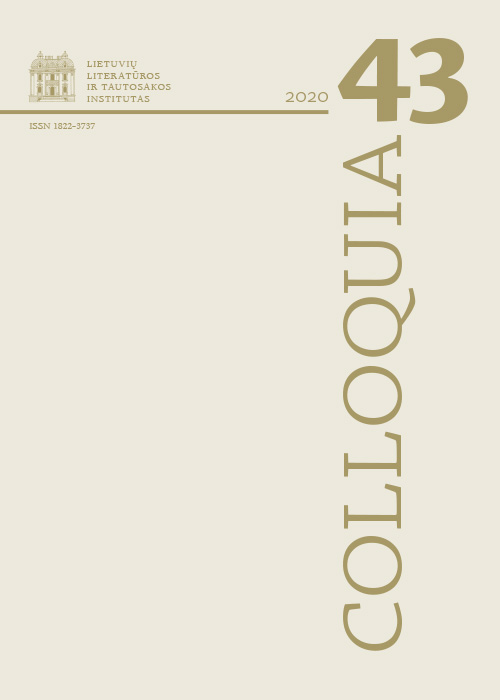Vincas Krėvė’s Agon
Abstract
The article analyzes the forms and meanings of agon culture in Vincas Krėvė’s dramas (Šarūnas, 1911 and Skirgaila, 1924) and short stories (Šiaudinėj pastogėj, 1921 and Raganius, 1938). It argues that Krėvė’s focus on agonic situations and stances, such as contest, debate, disagreement, and conflict is inseparable from the modern element of consciousness. The article also considers the problems of the relationship between creativity and destruction. This connection, which is typical of ancient Greek agon culture actualized by Friedrich Nietzsche (Homerʼs Wettkampf, 1872) allows to distinguish an analogous order of meanings and explain its
nature in Krėvė’s works.
In dramas, the creative and destructive potential of heroes’ agonic stance is revealed by focusing on the problem of modern society, i.e. the redistribution of power relations between art and politics and as the consequence, the genesis of political venturesome and authoritarianism. In short stories, which depict the life of the traditional Lithuanian rural community, the writer reveals a positive model of agon. He pays particular attention to the community-based conflict resolution practices related to archaic forms of agon culture. The role of an agon moderator performed by Krėvė’s herder, a man who lives on the periphery of the community, is decisive here. The paratopic position of the herder in the community and his behavior during the conflicts can be perceived as a functional analogy to the role of an artist in modern society. This perspective allows in writer’s short stories to grasp the impulse of ethnographic restoration and also of cultural criticism directed at the socio-cultural reality of Lithuania at that time. By provoking and moderating conflicts within the community, the paratopic hero of the cycle maintains its vitality and potential for renewal, and at the same time he establishes a sense of solidarity with its former adversary. The problem of agon revealed in Krėvė’s works offers itself to consideration of the consequences of marginalization of the artistic sphere in modern society.
Downloads
Most read articles by the same author(s)
- Brigita Speičytė, History in the Scope of a Female Aristocrat: Historical Novels by Sophie de Tisenhaus de Choiseul-Gouffier , Colloquia: Vol. 45 (2020)
- Brigita Speičytė, Beata Kalęba, Rozdroże: Crossroads: Polish Literature in the Context of Lithuanian National Rebirth , Colloquia: Vol. 39 (2017)
- Brigita Speičytė, The Hermit of Ustronė’s Broliai bajorai (Brothers Noblemen), or the Planes of Memory (A Little Bit From Everywhere, Vol. 2: Brothers Noblemen. The Hermit’s Gawęda) , Colloquia: Vol. 38 (2017)
